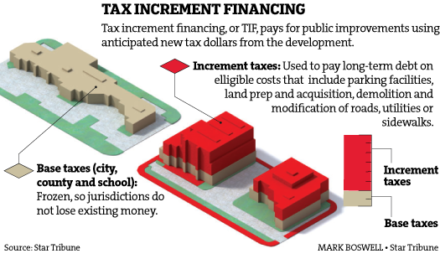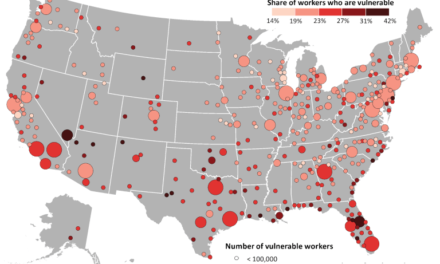From Atlantic Cities:
As many of Cleveland’s big corporate employers have left town over the last few decades – first U.S. Steel, then General Motors, then Westinghouse and General Electric – a cluster of long-running nonprofit institutions has remained intact on the city’s east side. Case Western Reserve University, the University Hospitals and the Cleveland Clinicall sit side-by-side there, occupying barely a square mile. By their very nature, none of them can pick up and leave. Case Western can’t flee to the suburbs. The Cleveland Clinic can’t relocate to Chicago.
“A lot of people once thought the same about these multinational corporations,” says Keane Bhatt, a community development associate with the University of Maryland-based Democracy Collaborative. In fact, in the 1950s, back when Cleveland had twice the population it does now, more Fortune 500 companies were employing people here than any other city outside New York. “But these,” Bhatt says, “are the only partners left.”
Collectively, the university, clinic and hospitals employ about 50,000 people. They spend some $3 billion on goods and services each year, on everything from the laundering of hospital sheets to the lettuce served in university cafeterias. Together, they could have a dramatic impact on the quality of life and employment opportunities in the communities around them. Until now, though, that has not been the case.
This is a map of the area compiled by Case Western’s Center on Urban Poverty and Community Development.

Sitting in the middle, in yellow, are the university, the hospitals and clinic. To the right is the middle-class suburb of Cleveland Heights, where the median income is $46,000 a year. All of those colorful squares otherwise encircling the institutions represent vacant properties (in tan), decaying or unsound buildings (in pink), as well as foreclosures, properties that are delinquent on their taxes or where the water has been shut off. In the six neighborhoods immediately surrounding the University Circle area, the unemployment rate is about 30 percent and the median family income is $18,500.
Of those 50,000 jobs on that one square mile of land, just 3,000 of them go to people living in the surrounding neighborhoods (most of them as janitors, security guards or other low-wage laborers). That’s out of a community of 43,000 people living there.
“What you end up having is a lot of educated professionals going past those neighborhoods on their way to work,” Bhatt says, “doing all of this business in that tiny little enclave and then going right back out.”
The Democracy Collaborative, along with the Cleveland Foundation and what they’re calling the three “anchor” institutions in the area, are now trying to change this. And their model could be replicated by cities across the country with an equally awkward juxtaposition of powerful institutions and poverty.
Community development workers like Bhatt first approached the university and hospitals to ask them about their long-range priorities.
“For whatever reason, they weren’t as interested in [prioritizing] revitalizing those neighborhoods near them. But what they were interested in was greening their supply chains,” Bhatt says. They wanted to locally source more of those $3 billion in goods and services they buy each year, by which they meant within a 100-mile radius of University Circle.
“What we’re saying is, well, try two miles,” Bhatt says.
The groups have now partnered to help create a family of local worker-owned co-ops called the Evergreen Cooperatives, which have been launched with the needs of the university and hospitals particularly in mind. In 2009, Evergreen opened a local industrial-scale green laundry and a solar installation firm, whose primary customers are the hospitals and university. Together, they have 50 worker-owners with an equity stake in the companies’ growth.
Evergreen is also currently building what may be the largest urban greenhouse in the country, a 3.5-acre hydroponic farm that will supply 3 million heads of lettuce a year to the neighborhood institutions and other buyers. The first crop is due in November, and with it will come another 50 jobs. The plan is to launch another two or three businesses each year under the Evergreen banner, with each new co-op contributing to a revolving loan fund that will help seed future companies.
“It’s rebuilding the civic capacity of these neighborhoods, which have been devastated by deindustrialization, by mass incarceration, by the foreclosure crisis,” says John Duda, communications coordinator for the Democracy Collaborative. “All of these things have wiped out the capacity of these neighborhoods to manage themselves.”
When the green laundry got started, 500 people applied to become its first worker-owners. As it turns out, 70 percent of the local residents who have now come on board as Evergreen members are ex-offenders (that outcome wasn’t intentional but speaks to the intrinsic challenges in the community). Each member makes an average salary, with free health care, of about $15 an hour. Over the course of about eight years, Evergreen also expects that their equity stake in these companies will reach about $65,000 per person.

Cleveland Foundation
The whole idea behind creating co-ops, and not just small businesses, is that they might contribute to the long-term community wealth and stability of these neighborhoods, while giving workers with no more than a high school diploma greater skills than your average laundry service provides. Co-op members must learn to manage businesses, to read financial statements, to resolve regular conflicts.
“When you have just a regular small business that becomes prosperous in a marginalized neighborhood, that one person will move his or her money and move his or her home to the suburbs,” Bhatt says. “Then their involvement in the school system, their tax revenue is completely gone.”
The capital to start all of these businesses has come from a combination of private investment, federal loans, grants and philanthropic contributions. Eventually, though, Evergreen is supposed to become self-sustaining, as a collection of for-profit companies launched with the help of non-profit partners. There is still room for a much more extensive local supply chain feeding into University Circle, for local businesses that would digitize medical records, refurbish equipment or track hospital supplies. In theory, these would be good jobs, albeit ones that wouldn’t require a college education. Those are the types of jobs Cleveland used to have in droves.
The Democracy Collaborative is hoping, in the medium term, to create about 5,000 of them, employing what would be the equivalent of about one in every 10 people in this area.
“We figure if we can build that many stable jobs in a community,” Duda says, “then you’re really looking at something a lot more interesting than these small projects.”






Let’s do this! This is real economic development that will make a long term impact in our inner city neighborhoods while rebuilding a local and greener economy!
Let’s do this! This is real economic development that will make a long term impact in our inner city neighborhoods while rebuilding a local and greener economy!